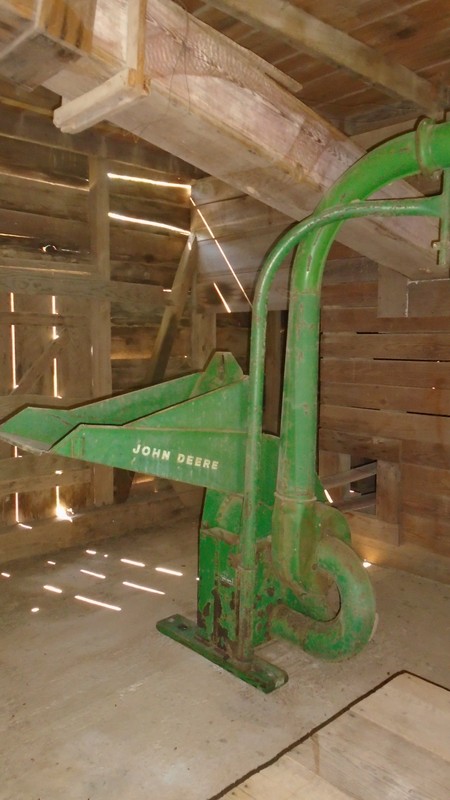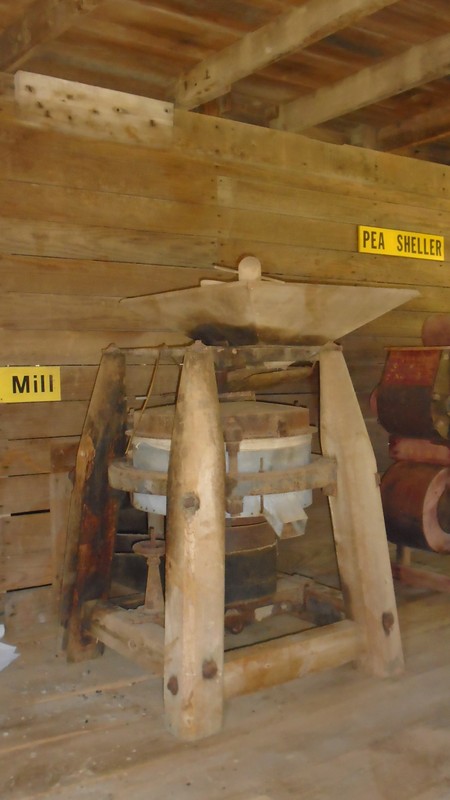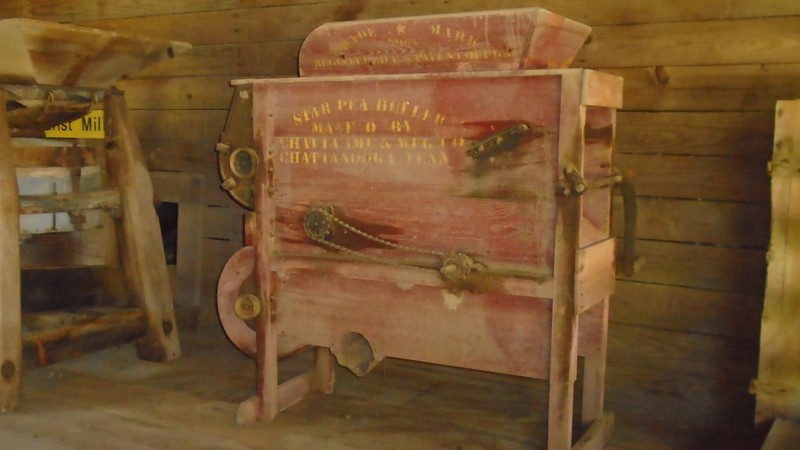Grist Mill, Corn Sheller, and Pea Sheller
Introduction
Text-to-speech Audio
Cotton ginning was not the only operation that occurred in gins. Taking advantage of the power source, gins would have machinery such as mills and shellers operating off the very same jack shaft driving the gin stands. Individual steam-powered mills did exist in some places, but for gins such as Goodlett's, it was best to provide multiple services alongside cotton ginning to the local agricultural community.
Images
Corn sheller

Grist mill

Pea sheller

Backstory and Context
Text-to-speech Audio
The corn sheller uses rotating wheels with teeth to separate kernels from the cob, either to be able to sell themselves or to be fed into the grist mill.
The grist mill turns kernels of corn into meal by crushing them between two stones. Historically any mill exclusively employed in grinding grain consumed by the inhabitants of the neighborhood, is called a ‘grist’ or ‘custom’ mill; and a portion of the grist is allowed to the miller, in payment for his services. The Goodlett's operated in the same fashion.
The pea sheller works like the corn sheller in a similar fashion, separating peas from the pods.
Sources
Brooke, Steven. Historic Washington, Arkansas. Gretna, Louisiana. Pelican Publishing Company, 2000.
Medearis, Mary. Washington, Arkansas : History on the Southwest Trail. Hope, Arkansas. Copies + Office Solutions, 1984.
Williams, Charlean Moss. The Old Town Speaks : Washington, Hempstead County, Arkansas, gateway to Texas, 1835, Confederate Capital, 1863. Houston, Texas. The Anson Jones Press, 1951.
Williams, Joshua. Washington. Images of America. Charleston, South Carolina. Arcadia Publishing, 2014.
Historic Washington State Park Collection
Historic Washington State Park Collection
Historic Washington State Park Collection
